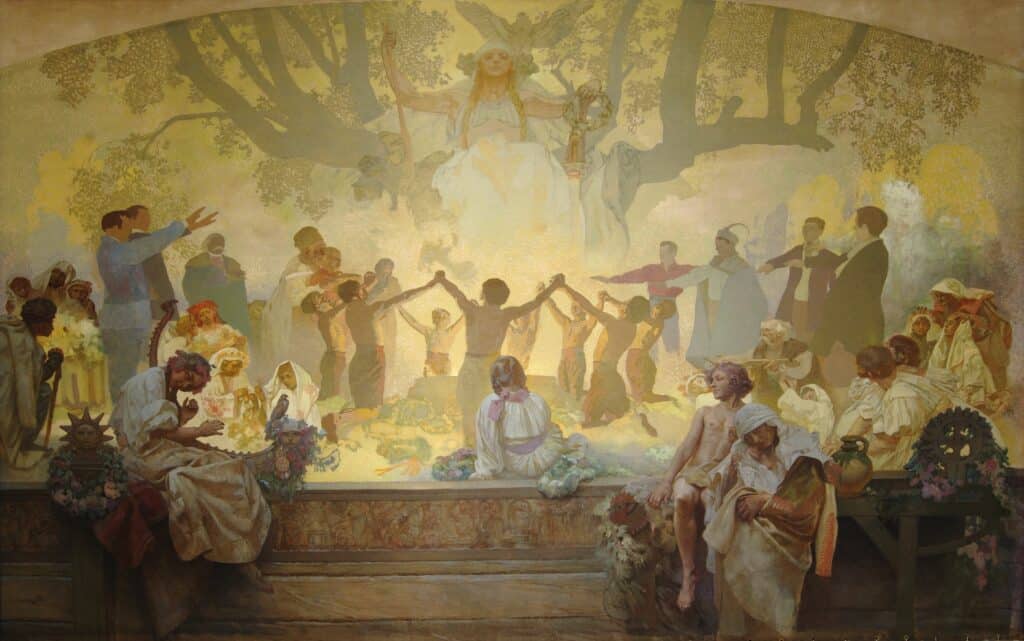Slavic Revival
According to Alfons Mucha, after the end of the Thirty Years' War, the Czech nation faced cruel times. Recatholization, centralization and Germanization culminated in the 18th century under Maria Theresa and Joseph II. However, after a period of the greatest political and linguistic oppression came the Czech national revival.
The people of Prague fought with all their might to restore their cultural and national identity. At the end of the 19th century a group of progressive youth called Omladina was founded. The movement was accused of treason, and in the trial of 1894, 76 people were put on trial, 68 of whom received a total of 96 years in prison. Among them were later representatives of political and cultural life such as Alois Rašín, Karel Stanislav Sokol, Stanislav Kostka Neumann and others.
The painting depicts a sacred Slavic linden tree, the model for Alfonsi Mucha was a real linden tree in the Žamberk region, in whose rosette sits the mother of Slavia. In front of her kneels the youth pledging loyalty to the nation and mutual cohesion. In the left background stands an old man with a massive grey moustache - a figure from the history of Serbia, reminding us that a similar movement existed in this country. On the right, a member of Sokol swears an oath.
The details of the faces of the swearing figures are not finished, so that Alfons Mucha avoided portraying politicians of his time. Criticism of his work also peaked between 1925 and 1926, when he painted this picture, and it is likely that the bitterness of the insults prevented Mucha from completing the painting.
Only the lower part of the painting is elaborated: on the left is a girl playing the harp in the form of Mucha's daughter Jaroslava, on the right is a boy who has the face of the painter's son Jiří. Their companions personify youth - the future of the nation. According to Alfons Mucha, only a nation that knows its history and roots can live and work for the present and the future. On the right, an old guslar sings about the glorious deeds of his ancestors and the youth listen. On the far right we see the swastika - the symbol of the sun in motion, which was worshipped by the ancient Slavs and other pagan peoples.
Vita App/gnews.cz-Jana Černá_07
https://mk-epopej-pruvodce.netlify.app/dospely/18



